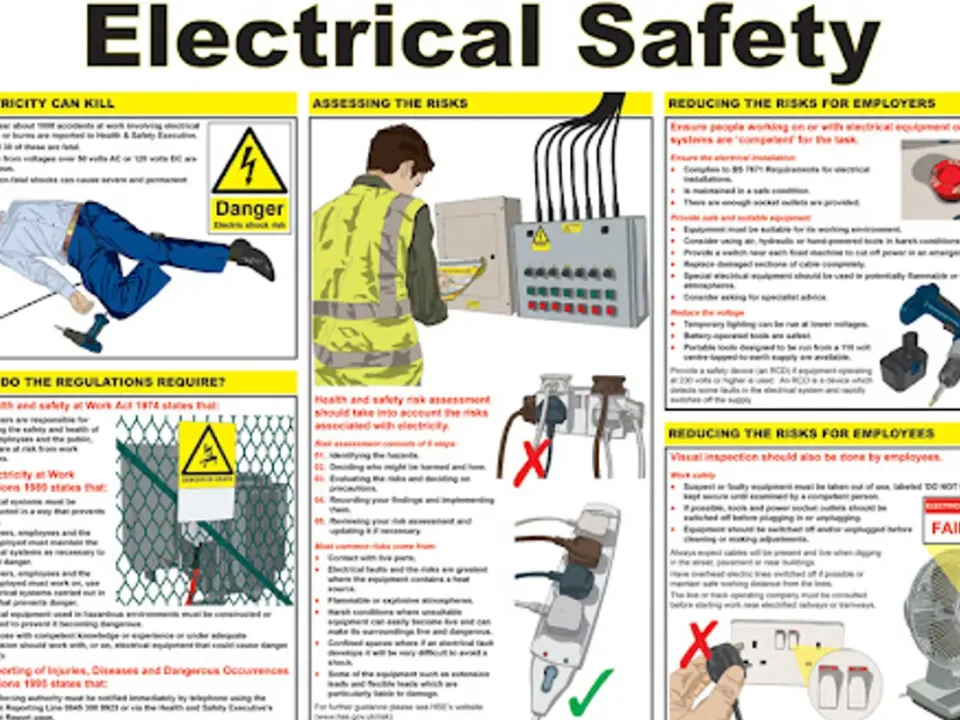Unveiling the Importance of a Comprehensive Safety Audit for Factories as per Factory Act and BIS 14489 Guidelines

Fire Risk Assessment in Multi-Occupancy Buildings: Balancing Safety and Resident Comfort
July 13, 2023
Discover the Power of Behavior-Based Safety: Transform Your Safety Culture Today
July 14, 2023Unveiling the Importance of a Comprehensive Safety Audit for Factories as per Factory Act and BIS 14489 Guidelines
Ensuring safety is paramount in any workplace, but it holds even greater significance in factories where the potential for accidents and hazards is magnified. That’s why a comprehensive safety audit becomes an indispensable tool for factory operations. In this article, we will delve into the importance of conducting such audits in accordance with the Factory Act and BIS 14489 guidelines.
We will explore the intricate details of what a comprehensive safety audit entails and why it matters to both factory owners and employees. By unraveling the legal framework set forth by the Factory Act and BIS 14489 guidelines, we will gain a deeper understanding of the obligations imposed on factories to ensure a safe working environment.
Defining a Comprehensive Safety Audit: What it Entails and Why it Matters
A comprehensive safety audit is a meticulous examination of a factory’s safety policies, procedures, and infrastructure to ensure compliance with the Factory Act and BIS 14489 guidelines. It involves an in-depth assessment of various aspects such as physical work environment, machinery, emergency preparedness, training protocols, and documentation.
By conducting a comprehensive safety audit, factory owners and managers can uncover potential hazards that may endanger workers’ lives or compromise their well-being. This proactive approach helps to identify shortcomings in safety measures and allows for appropriate corrective actions to be taken promptly. Moreover, implementing thorough safety audits demonstrates a commitment to ensuring the highest possible standards of workplace safety.
The Factory Act and BIS 14489 Guidelines: Understanding the Legal Framework
When it comes to ensuring workplace safety in factories, the legal landscape plays a pivotal role in setting the standards and expectations. The Factory Act, enacted with the aim of safeguarding workers’ rights and well-being, serves as a cornerstone of industrial legislation. Under this act, various provisions are in place to ensure that factories maintain proper safety measures to protect their workforce.
In addition to the Factory Act, adherence to BIS 14489 guidelines further strengthens the legal framework governing factory safety. The Bureau of Indian Standards (BIS) has diligently formulated guidelines that cover a wide range of aspects related to factory operations. These guidelines outline specific safety requirements for equipment, machinery, electrical installations, fire prevention and control systems, ventilation systems, and much more.
By understanding and complying with both the Factory Act and BIS 14489 guidelines, factories can not only fulfill their legal obligations but also provide a secure working environment that fosters employee well-being. Embracing these regulations ensures that workers can carry out their tasks without fear or apprehension while management can confidently uphold their commitment towards occupational health and safety.
The Cost of Ignoring Safety: Real-Life Stories and Examples
When it comes to factory safety, the consequences of negligence can be devastating. Real-life stories serve as poignant reminders of the human toll that occurs when safety is compromised. Take, for instance, the unfortunate incident at a textile factory where an outdated fire suppression system led to a catastrophic blaze. Lives were lost, families shattered, and a once-thriving community left in ruins. This heart-wrenching tale underscores the vital importance of adhering to safety regulations and conducting comprehensive audits.
Another sobering example is the case of a chemical plant that neglected proper storage practices. A preventable chemical leak occurred, causing severe health hazards for nearby residents and irreversible damage to the environment. The economic cost was immense as well, with businesses in the vicinity suffering significant losses. These instances highlight how neglecting safety measures not only endangers lives but also carries substantial financial burdens that could have been avoided.
Steps to Conducting a Comprehensive Safety Audit: A Practical Guide
Embarking on a comprehensive safety audit can seem like a daunting task, but with the right approach and meticulous planning, it can be an empowering and enlightening process. Here, we will outline the important steps involved in conducting a thorough safety audit that ensures the well-being of workers and upholds legal requirements.
1. Establish Clear Objectives: Before diving into the audit, it is essential to define specific goals and objectives. Determine what aspects of safety you want to assess – whether it’s machinery, workplace conditions, or employee training programs – and set measurable targets to evaluate their effectiveness.
2. Assemble an Expert Team: Safety audits require diverse expertise from various disciplines. Formulate a team comprising professionals knowledgeable in engineering, occupational health and safety regulations, human resources, and management practices. This collaborative effort will enhance the accuracy and comprehensiveness of the audit.
3. Create an Audit Checklist: Develop a detailed checklist encompassing all relevant areas of safety in your factory as per Factory Act and BIS 14489 Guidelines. Consider factors such as physical hazards, emergency preparedness protocols, maintenance routines, training records, signage availability, personal protective equipment usage compliance, etc.
4. Conduct On-Site Inspections: It’s time to delve into the heart of your factory operations through thorough on-site inspections. Examine each area meticulously – from production floors to storage facilities – documenting all observations regarding potential hazards or non-compliance with safety standards.
5. Review Documentation
Identifying Potential Hazards: Unveiling Hidden Dangers in the Factory
In the labyrinthine world of factory operations, dangers often lurk unnoticed, waiting to unleash havoc upon unsuspecting workers. To ensure a safe working environment, it is imperative to undertake a comprehensive safety audit that meticulously identifies potential hazards. By unveiling these hidden dangers, factories can take proactive measures to mitigate risks and protect their most valuable assets: their employees.
During the identification phase of a safety audit, experts meticulously scrutinize every nook and cranny of the factory floor. From high-risk machinery to precarious storage arrangements, nothing escapes their discerning eyes. They delve into the intricacies of production processes, carefully noting any potential hazards that may compromise safety. No stone is left unturned as they investigate electrical systems, chemical storage areas, ventilation systems, and even seemingly innocuous elements such as slippery floors or improperly stored equipment.
With Best Wishes
Sanjeev Paruthi
TSM TheSafetyMaster® Private Limited
Unit No 221-451-452, SPL1/J, 2nd & 4th Floor, Sunsquare Plaza Complex, RIICO Chowk, Bhiwadi 301019, Rajasthan, India
Phone: +91 1493 22 0093
Mobile: +91 7665231743/9413882016
Email: info@thesafetymaster.com




